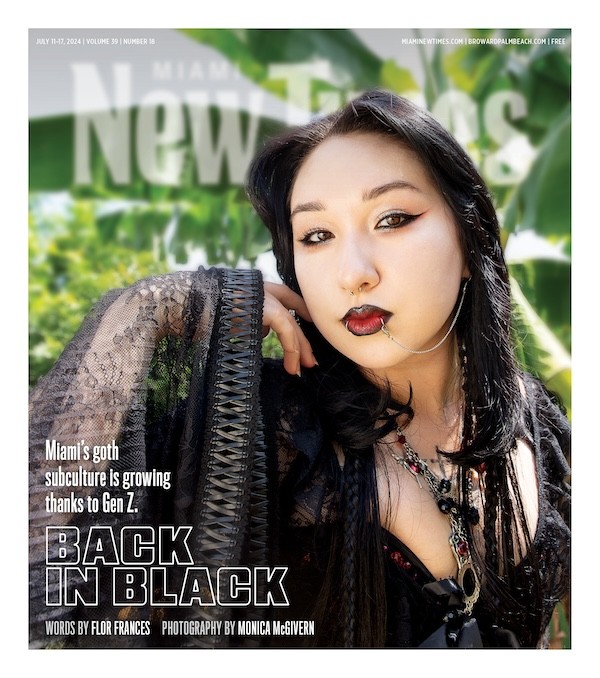Best Key Lime Pie
Fireman Derek's World-Famous Pies
When he's not cooking meals for the guys at Miami Fire-Rescue Station 1, Derek Kaplan is baking pies: apple, coconut cream, peach, banana cream, pecan, chocolate pecan, and his signature key lime. It all started as an experiment to perfect his recipe, but friends liked what they tasted, and Fireman Derek's Key Lime Pies was born in 2008. The citrusy dessert has just the right balance of tartness and sweetness. Its filling, prepared with fresh-squeezed key lime juice, is creamy and delicious, and the graham cracker crust is homemade. Pies are available whole ($15) or in single-serving cups ($3 each or ten for $25), which are the perfect size to indulge with less guilt. Find them around town at places such as La Camaronera, Slice-N-Ice, and Bon Appétit Walk-A-Way Café (2600 NE Second Ave., Miami), where Kaplan bakes his wonders. Or simply call or email him to order.
Best Cupcakes
2 Girls and a Cupcake
Got a secret fetish for sugar porn? There's no shame in getting off on sweet, moist treats. And 2 Girls and a Cupcake knows how to bring orgasmic bliss with aphrodisiacs such as Kiss Me I'm Cuban, a tropical coconut cupcake topped with mango buttercream and toasted coconut. Then there's the Ocean Drive, a blue vanilla cupcake topped with yellow buttercream and dusted with brown sugar. The 20-something-year-old bakers behind 2 Girls — Evelyn Dieppa and Lorena Castro — are always adding a sexy Miami swagger to their fluffy, sinful treasures. When the sisters competed on Food Network's Cupcake Wars earlier this year, they paid tribute to local hip-hop luminaries such as Pitbull and Mayday by creating Mr. 305 — a vanilla cupcake with mango filling and vanilla buttercream — as well as Stuck on a Cupcake, a vanilla-peanut butter chip version with grape jelly that's topped with peanut buttercream. Dieppa and Castro didn't win the show's $10,000 prize, but their cupcake operation, which launched on Valentine's Day 2008, is flourishing. The pair's online bakery features every single flavor available, including a special menu of alcohol-infused cupcakes for kiddie-themed adult parties. Prices range from $1 to $3 per cupcake.
Best Desserts
Sosta
Dessert menus at pizzerias are usually predictable and snore-worthy, so the folks at Sosta are probably damn happy that award-winning pastry chef Antonio Bachour is in charge of theirs. Let the competition serve stale cannoli from the neighborhood bakery, slightly defrosted cheesecake from a big-box store, and icky spumoni with candied cherry chunks. We'll be digging into Bachour's creamy vanilla panna cotta, decadent torta di cioccolato with pistachio gelato, and tiramisu made with Gianduja, sweet chocolate with hazelnut paste. Speaking of which, don't even get us started on the eight-inch Nutella pizza pie. Pizza dough spread with chocolate and dusted with powdered sugar? OMG. Bachour can always be counted on to come up with confection wizardry, wowing with prismatic color combinations and meal-enders that are never too sweet or too savory. La dolce vita, indeed.
Best Churros
Manolo
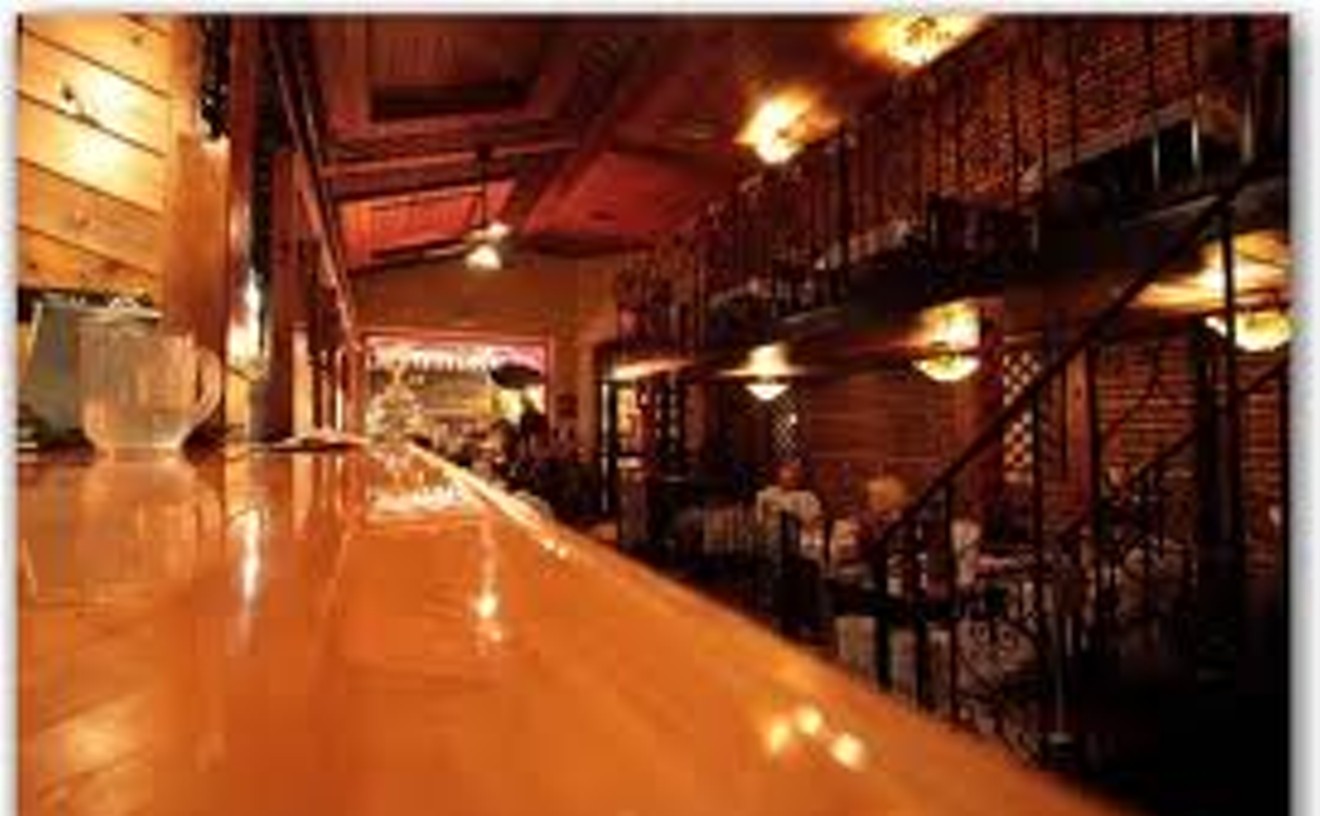
The first restaurant of Manuel Benito and his family debuted in Burgos, Spain, in 1930. The clan immigrated to Uruguay during the Franco days, and Manolo became their trademark name for eateries in Costa Rica, Peru, Panama, Argentina, and the good old USA. Churros have a longer history than that. The fried, fluted, sugar-sprinkled sticks are said to be named after the churro, a breed of Spanish sheep, and first made by shepherds centuries ago. Then again, Sephardic Jews and Arab Moors each arrived in Spain with sweet, fried-batter treats, so it's possible one of those groups can take credit (let them fight it out). We do know that churros spread from Spain to Central and South America, and that Manolo serves them the same way as churrerías in those places: either plain (55 cents each) or churros rellenos, meaning filled with chocolate, vanilla custard, or dulce de leche (75 cents). It's a cheap thrill.
- 7300 Collins Ave., Miami Beach, 33139 Map
- 305-868-4381
Best Dessert Crêpes
Otentic

Photo by John Zur
The history of the crêpe is fodder for debate. Some contend the name is French for "pancake" and thus conclude the person who prepared the first flapjack in France simply forgot to add baking powder. This theory is vigorously disputed by the Crespelle Conspiracists, who believe the crêpe recipe was stolen from Italy by French nationalists in retaliation for Pope Clement VII's actions against Charles V in 1526. Who knew? One thing not debatable is that the owners of Otentic Restaurant prepare the sort of authentically delectable dessert crêpes one might find proffered by a Parisian street vendor. For $6.50 each, the ethereal circles are delicately filled with choice of ice cream, banana, strawberries, chocolate mousse, honey, sugar, jam, Chantilly cream, or, our favorite, the classic Nutella chocolate-hazelnut spread. The French chef pours the batter on a specialized turntable-shaped griddle, waits for those caramel-colored dots to appear, flips the crêpe, slathers on the sweetness, folds it, and delivers it still steaming to the table. Otentic likewise spins savory crêpes ($7 to $8) for patrons with less of a sweet outlook on life.
- 538 Washington Ave., Miami Beach, 33139 Map
- 305-531-1464
- otenticrestaurant.com
Best Ice-Cream Parlor
Todo Frio
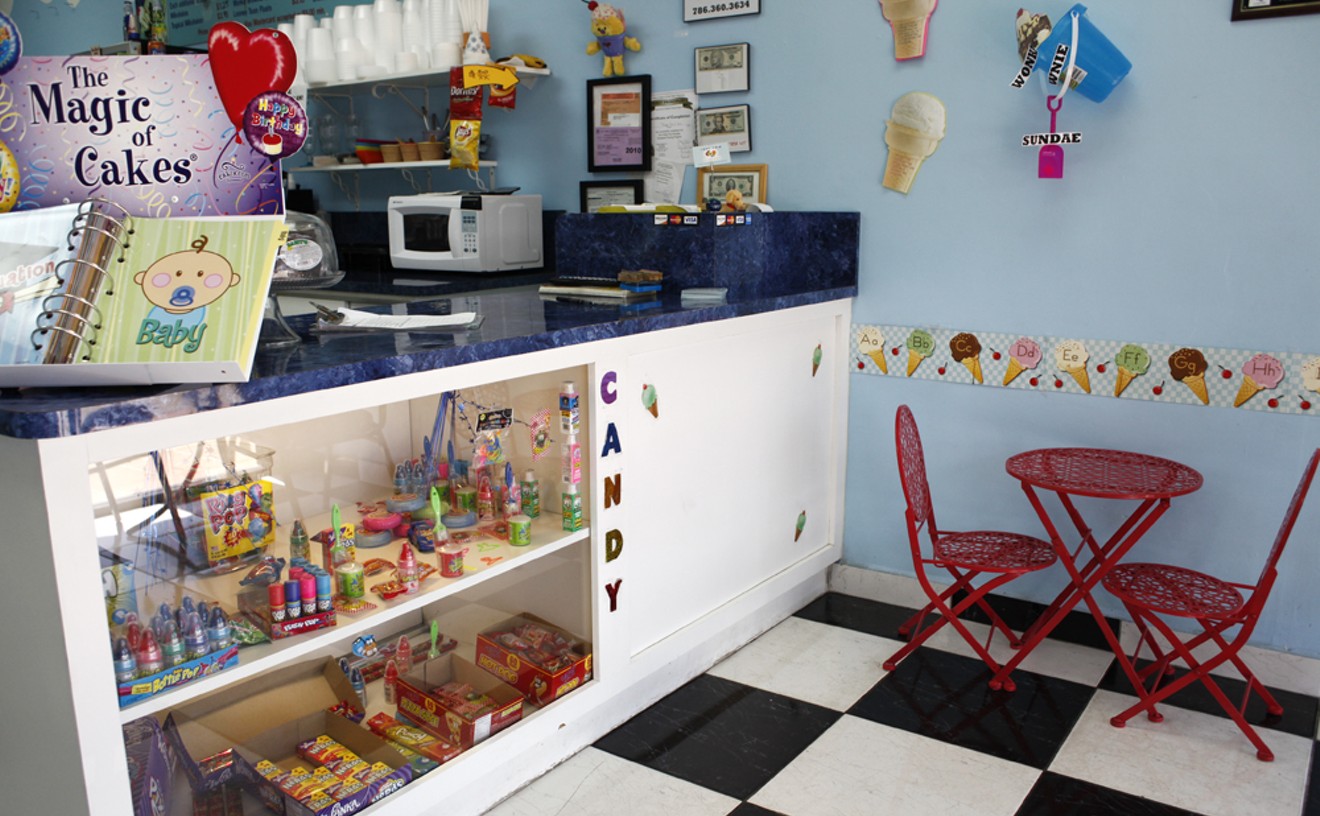
Leah Gabriel
Forget checking Yelp to find the latest fancy, overpriced yogurt shop. Sure, that spot has a cutesy name, Ikea décor, UM girls who think your facial scruff is way cool, and other temptations such as 1,000 self-serve toppings charged by weight. Keep it simple and opt for ice cream. Todo Frio does it old-school with good, traditional, calorie-laden, scooped-up, no-soy-substitutes frosty stuff. The sweetest part: old-timey prices. An ice-cream cone will set you back $1.50. Flavors include tropical mango, coconut, pineapple, conventional vanilla and chocolate, and even hyperactive-kindergartener-tamer Spider-Man, AKA vanilla with food coloring. Mostly, though, it's a nice throwback to yesteryear — neither too shiny nor too perfect. You can stop here when you're not in the mood for the barely legal set swooning about the latest RPattz movie and his Us Weekly cover.
- 2715 SW 37th Ave., Coconut Grove, 33133 Map
- 305-442-1907
- www.todofrio.net
Best Café con Leche
Coffee Zone
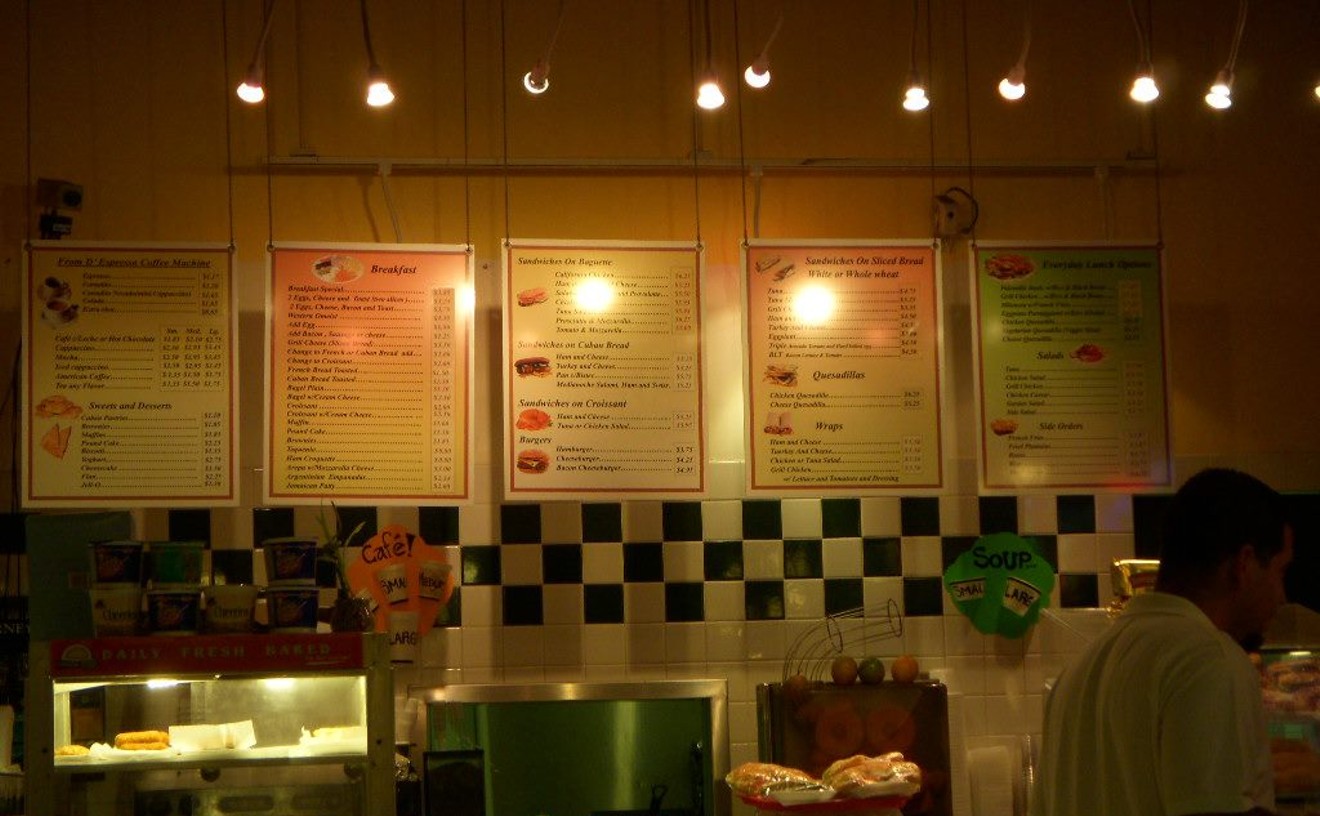
America might run on Dunkin' Donuts, but Miami sprints on café con leche. Basically, as soon as you're weaned off the bottle, you're given this stuff — one part superstrong coffee, 20 parts warm, sweet, comforting milk — thus conditioning an addiction that eventually becomes a dietary staple for most of the 305. Serving it dulce y clarito is Coffee Zone in Brickell. The secret to its café con leche's beautiful flavor and wonderfully creamy, frothy texture might be the fact that the restaurant is hidden inside the same building that houses the Venezuelan and Colombian embassies. You have your choice of three sizes, with prices that range from $1.87 to $3.27.
- 1101 Brickell Ave., Miami, 33131 Map
- 305-374-3790
- www.ecoffeezone.com
Best Coffeehouse
Nube Coffee Bar
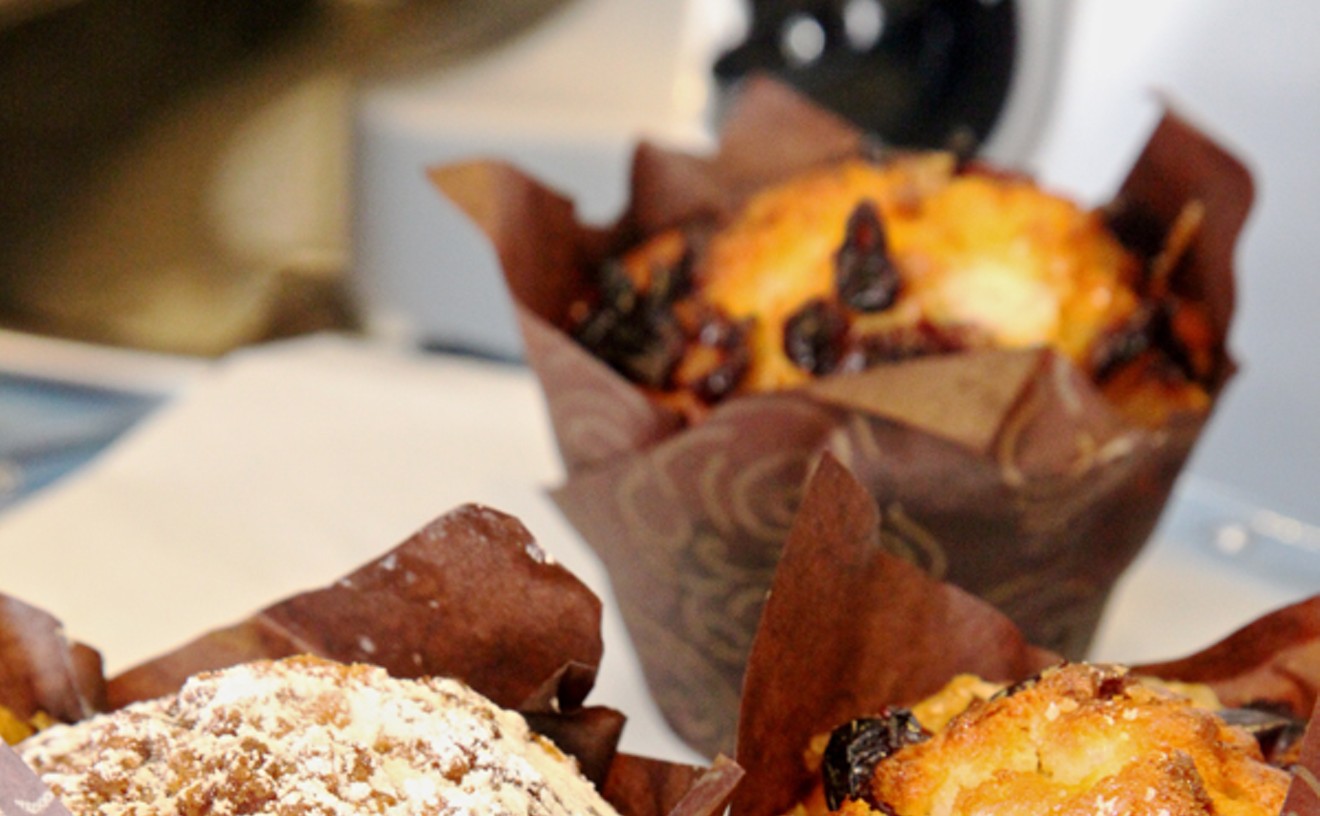
Adrianne D'Angelo
Nube, a quaint shop near Coral Gables City Hall, serves coffee hailing from small farms in places such as Brazil and Ethiopia, and roasted by Panther Coffee, a local independent. There are no venti white chocolate lattes or any drinks of that sort here. Nube's menu offers straightforward drinks — espresso, American, cappuccino, latte, frappe, and mocha — in eight-ounce and 12-ounce servings. All go for under $5. Nube also offers breakfast and lunch, supports local artists by featuring their work and hosting gallery night events, and has free Wi-Fi.
- 475 Biltmore Way, Coral Gables, 33134 Map
- 786-390-2425
Best Teahouse
SpecialTea Lounge
We love Miami, we really do. This world of pastel concrete and banal vanity rooted in artistic expression warms our hearts like year-round sunshine. But some days, when we're sunburned and hung over and can't locate a baby-pink house with baby-blue shutters because all the houses are baby pink with baby-blue shutters, we crave a respite. Maybe a little café with the worn, grandfatherly feel of an older city like New York or Seattle... a place full of dark wood shelves displaying obscure books and children's board games... a joint owned by a young couple that wears earth-friendly T-shirts and brings a big, sloppy dog to work... a teahouse where college kids pen bad novels on their laptops while taking advantage of free Wi-Fi and sipping organic, fair-trade loose-leaf teas with pretentious names like shade-grown African honeybush tisane. Those days, we don't head to busy downtown corridors, historic Gables alleyways, or funky Design District paths. We look to the belly of the pastel, suburban beast — West Dade — a couple of blocks from Florida International University. We tuck into a storefront humbly announcing "Miami's only tea lounge" and order a panini and small pot of one of the more than 60 teas offered. We sit back on a comfy couch, catch a poetry performance or two, and ponder all that Miami might become in time.
- 10766 Coral Way, Miami, 33165 Map
- 305-554-8327
- specialtealounge.com
Best Place to Smoke a Hookah
Sawa Restaurant & Lounge
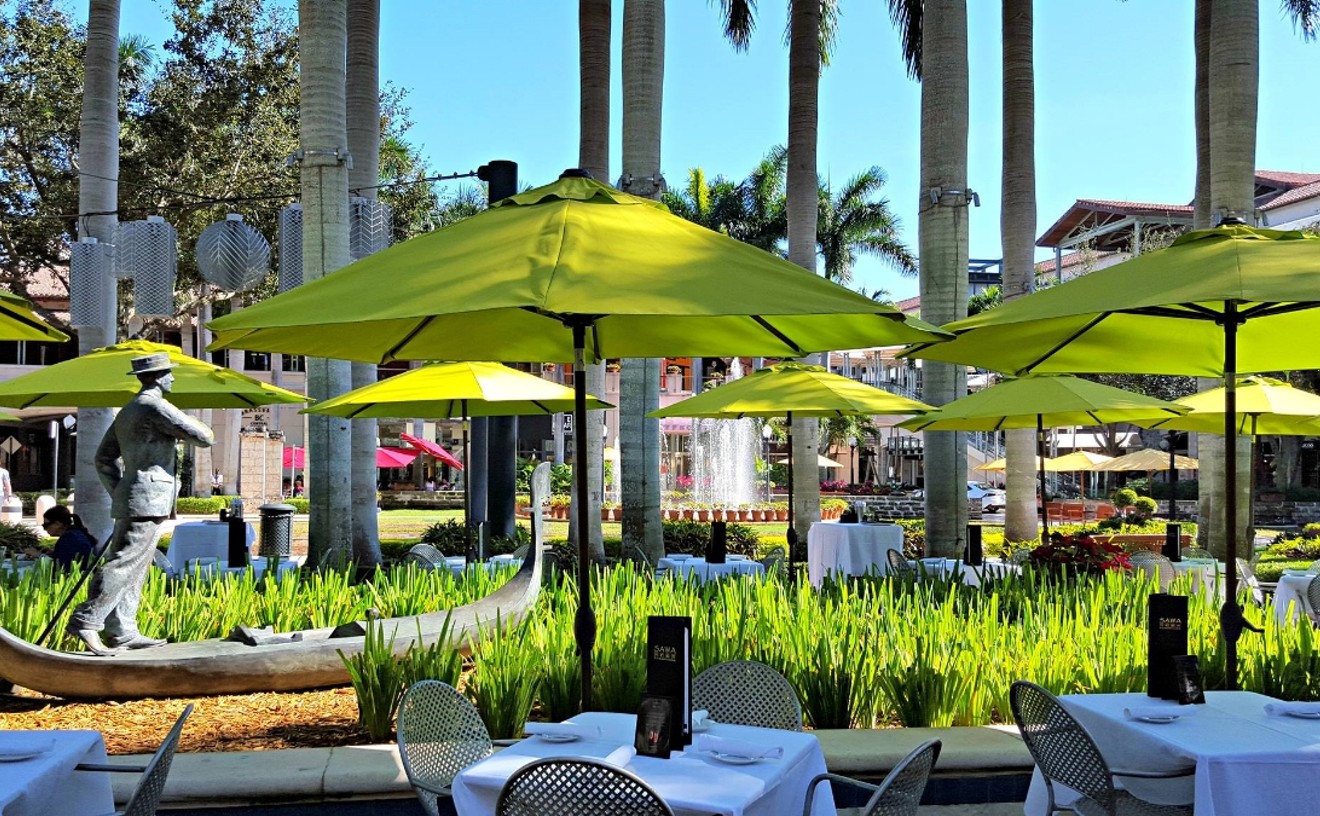
Photo courtesy of Sawa
Many Americans have smoked hookahs yet have never used tobacco in one. But Sawa Restaurant & Lounge is the spot to go if you wish to inhale any number of flavored tobaccos. Patrons puff while seated on soft leather sofas amid white curtains billowing under royal palms in the outdoor center of the Village of Merrick Park. The al fakher hookah selections ($20) include about a dozen fruit-based smokes, from strawberry to watermelon to double apple. But Sawa is also "home to the hookah on steroids!" ($33), which means the base of the water pipe is filled with choice of cocktail: cosmopolitan, mojito, strawberry margarita, and so forth. No, you definitely do not drink said cocktail after smoking, but it adds flavor and a slightly intoxicating inhalation. Before flaunting contemporary society's anti-smoking conventions, you might strongly consider partaking of chef Jovens Jean's modern Mediterranean small plates or creative sushi rolls in the same oasis-like outdoor setting.
- 360 San Lorenzo Ave., Coral Gables, 33146 Map
- 305-447-6555
- sawarestaurant.com




